
THE 5G IN SPAIN, THE 6G IN EUROPE AND ITS ENERGY EFFICIENCY, PROTAGONISTS OF THE SECOND DAY OF THE 5G FORUM
The second day of the 5G Forum 2022 was attended by Arturo Azcorra, General Director of Telecommunications and Management of Audiovisual Communication Services of the Ministry of Economic Affairs and Digital Transformation, and Peter Stuckmann of the European Commission.
The second day of the 5G Forum 2022, the first virtual one after the face-to-face opening day at Fibes, Seville, featured large multinationals and speakers who spoke about the current and future situation of 5G technology: Arturo Azcorra, General Director of Telecommunications and Planning from the Audiovisual Communication Services of the Ministry of Economic Affairs and Digital Transformation, Peter Stuckmann, Deputy Director Future Networks of the European Commission; large American companies such as American Tower, Qualcomm or Mavenir. Also large European companies such as Netmetrix (Spanish), Spirent (British) or Ericsson (Swedish) and Asian giants such as ZTE or Huawei (both Chinese).
The 5G situation in Spain
Arturo Azcorra, General Director of Telecommunications and Management of Audiovisual Communication Services of the Ministry of Economic Affairs and Digital Transformation, has opened this conference with a presentation entitled “The deployment of 5G: a transformative element of the Spanish economy”.
Azcorra has reviewed the Government’s 5G Plans, and measures of these plans, which have already been implemented, and those that are in the process of being implemented to support the deployment of 5G, as well as some special high-impact projects in specific sectors: “The actions from the Spanish government that are being carried out in the short term to promote the deployment of 5G and, thus, turn it into a transforming element of the Spanish economy.
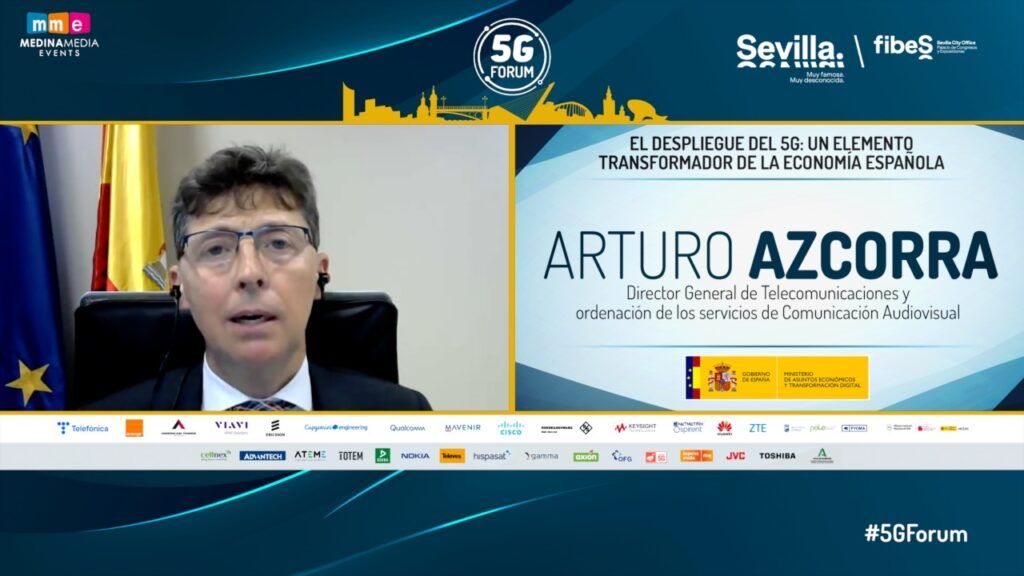
The Director General of Telecommunications has commented that the strategy to promote the 5G strategy is a much more ambitious plan, “which from 2020 to 2025 will allocate 2 billion euros to promoting 5G technology, and to be executed between 2020-2023”.
Azcorra acknowledges that in order to achieve the objectives of the Government’s 5G strategy, public aid is essential to provide this technology to the most depopulated areas: “One of the objectives of public aid is to reduce the digital divide in the most rural areas with respect to to large urban areas, where 5G will arrive much earlier, in order to accelerate the deployment of 5G in Spain”.
He also explained where actions have been carried out in different sectors for the implementation of 5G. In the leisure sector “special projects have been carried out in the field of gaming combining virtual reality and augmented reality”. In the tourism sector “Santiago de Compostela was the scene of a 5G experience that opened the doors to new ways of developing smart tourism”. In the health sector “we have a very interesting experience at the Hospital Clínic with the Optimus operating room, equipped with 5G technology from Vodafone, which allows remote operations to be carried out wirelessly”.
Lastly, Azcorra acknowledged that “Europe has neglected the entire technology sector in the last 20 years” but that “it is taking action to correct it, such as the Gigabyte Europe project”.
The 6G of the European Commission
Later, it was the turn of Peter Stuckmann, Deputy Director Future Networks of the European Commission. Which has analyzed Europe’s path to 6G. It has also updated the 5G policy of the European Commission as part of the Digital Decade Program and has introduced the new 6G R&D strategy which, with the already committed public-private budget of around 2,000 million euros, establishes the certainty of financial planning required to advance an ambitious 6G R&D roadmap.
Stuckmann has stated that in the European digital policy on 5G towards the year 2030 “a fundamental pillar has to be infrastructure. And another of the main points is the skills and, of course, the transformation of the government and companies in the use of this technology to activate the economy and society.”
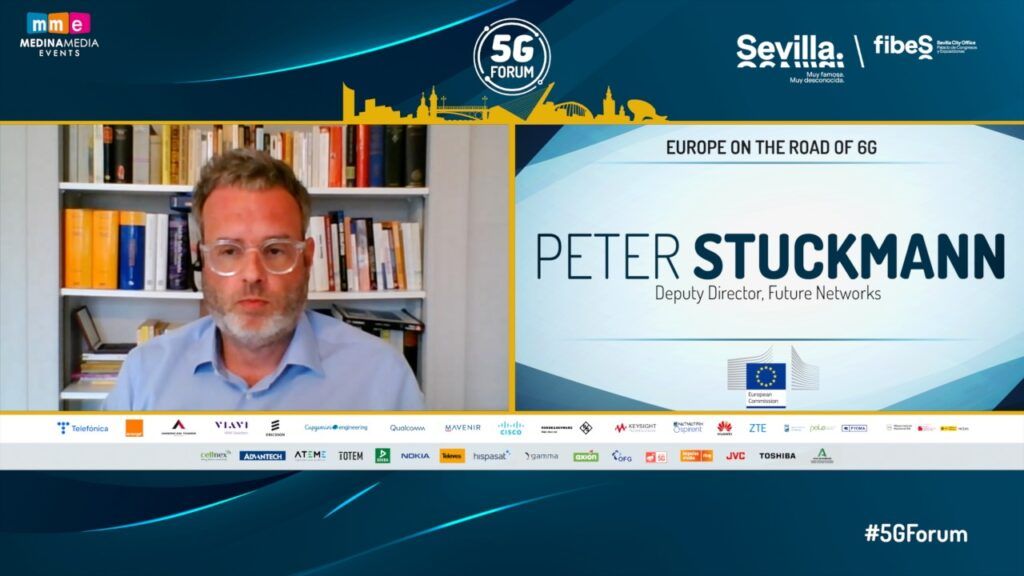
For Stuckmann it is important to invest in digital infrastructure: “We are in a recovery phase, the European Commission has launched a new generation of recovery funds in the member states intended for all member states for the implementation of an ecosystem on a European scale”. Finally, Stuckmann announced that Europe has launched the first large-scale research and innovation program on 6G.
Ready for 5G, is it early to talk about 6G?
Subsequently, it was the turn of José Barroso, head of Innovation at American Tower. A Boston-based real estate investment group. Barroso explained that American Tower has created an innovative Mupi. A hybrid support of telecommunications, advertising and public service to the citizen, for the use of urban furniture in the development of New Technologies in SmartCity: “A new project that was born in Spain. We have managed to unite companies from different sectors to provide a public service that can be very important from now on”.
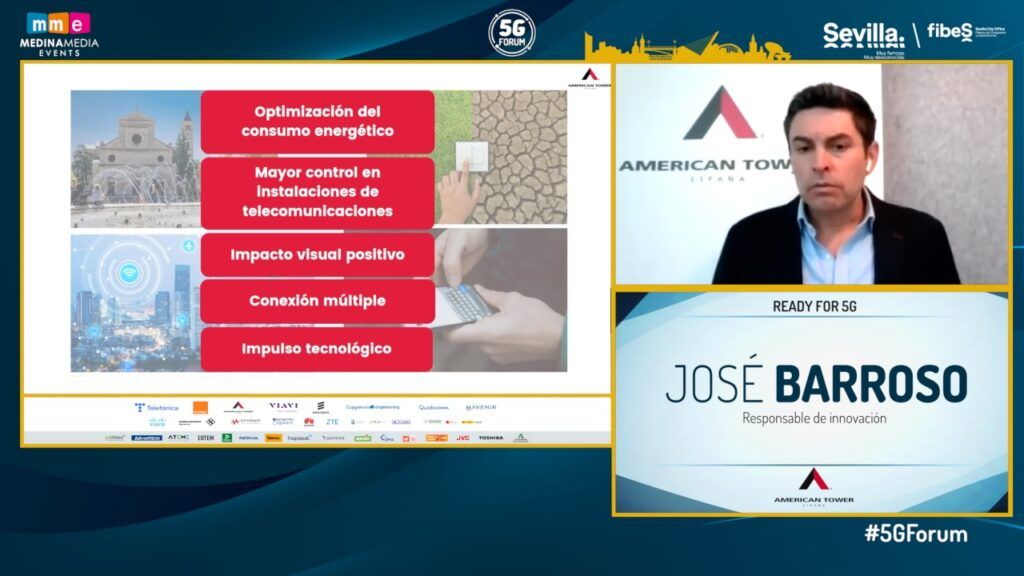
Barroso has guaranteed that American Tower provides the necessary infrastructure to make a connected world possible, outdoors, indoors and in urban and rural locations: “Our innovative solutions are the foundation of tomorrow’s 5G. We offer urban infrastructure solutions for multiple clients, solving the densification challenges faced by operators in cities, while integrating into the urban landscape”.
After Barroso has come the turn of Douglas Vaz Benítez, General Manager in Spain of Qualcomm. American company that produces chipsets for CDMA and W-CDMA mobile technology. This speaker has exposed how 5G evolves towards 6G and the next steps and characteristics of this path.
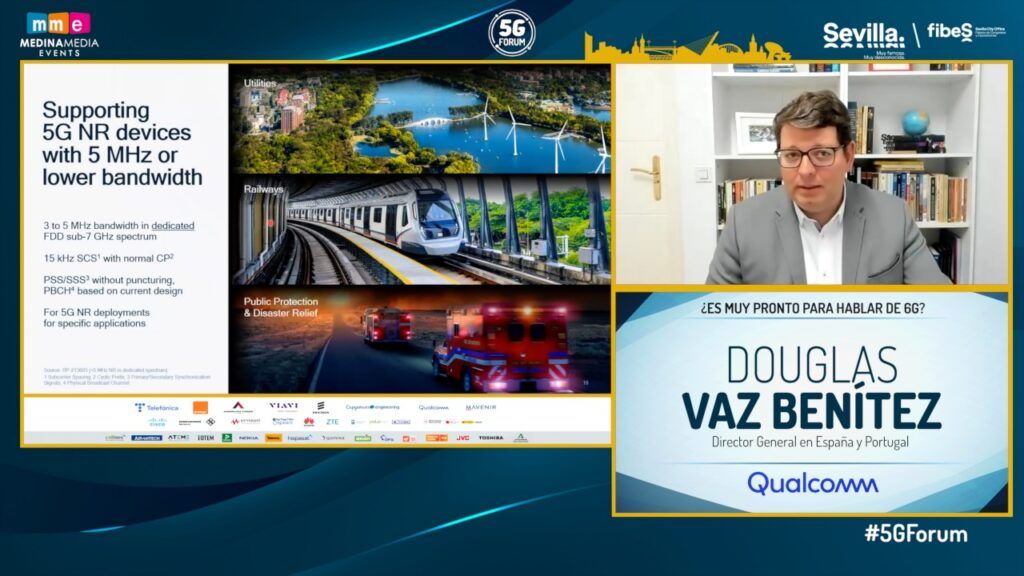
Regarding the question, is it early to talk about 6G? Vaz Benítez guarantees “that it is still early to talk about 6G, because there is a long way to go. But it does ensure that there is a great technological change and we have to prepare for 6G.” Especially at an industrial level, “we already have to talk about 6G because companies have to work 10 years in advance to deal with new technologies.”
A more sustainable world with 5G
Then it was the turn of Javier Gavilán, Regional CTO for Southern Europe and Latam at Mavenir. American telecommunications software company that develops and supplies cloud-native software to the communications service provider market.
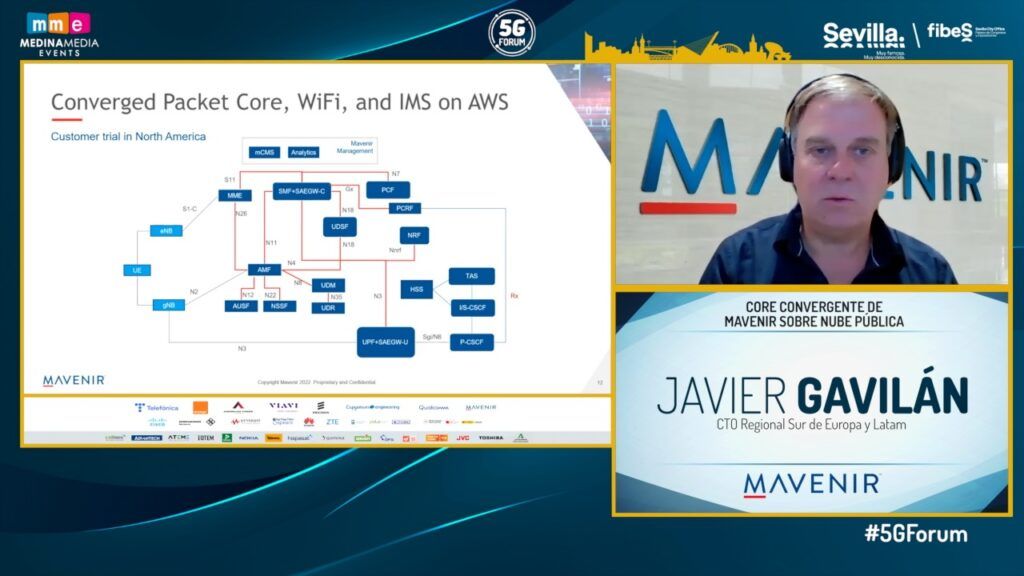
Gavilán has presented the Mavenir Convergent Core on the public cloud: “we are making a powerful effort to be able to deploy collaborative actions with Amazon. Right now we are working on three initiatives in parallel: AWS partner program, AWS Private 5G and AWS Outpost Server”.
Gavilán assures that “both firms have managed to simplify the use of voice, messaging and orchestration in the public cloud for operators. Both firms aspire to gain a larger share of the 5G market.”
Subsequently, Pablo Álvarez, Managing Director of Netmetrix and Stephen Douglas, Head of 5G Market Strategy of Spirent; They have talked about what the changes are and the new testing mentality for the 5G world.
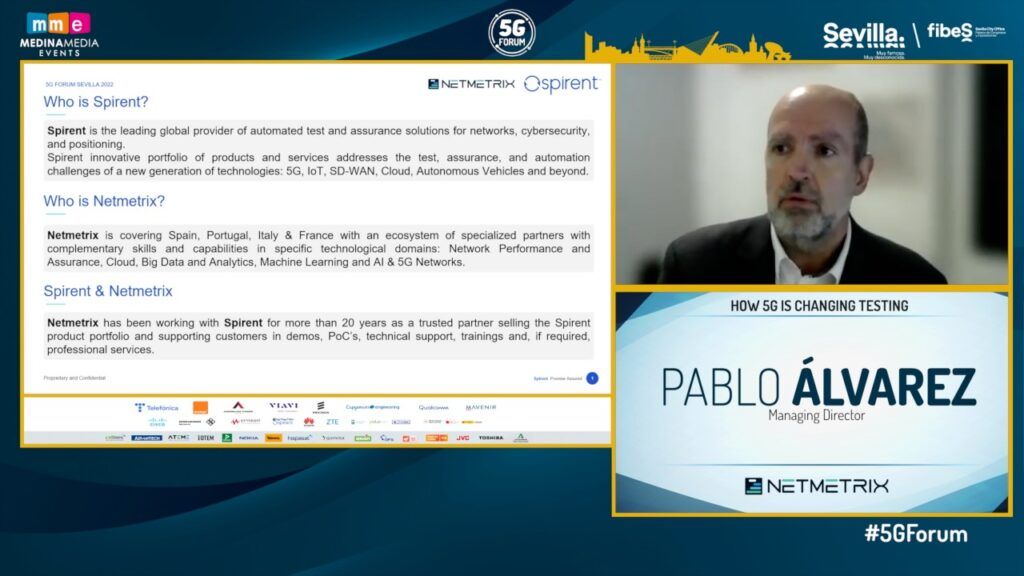
They state that “5G represents a promise or wish list for mobile. It is a set of strategic goals that will not only shape the future of mobile, but will determine its role in the future of communications.”
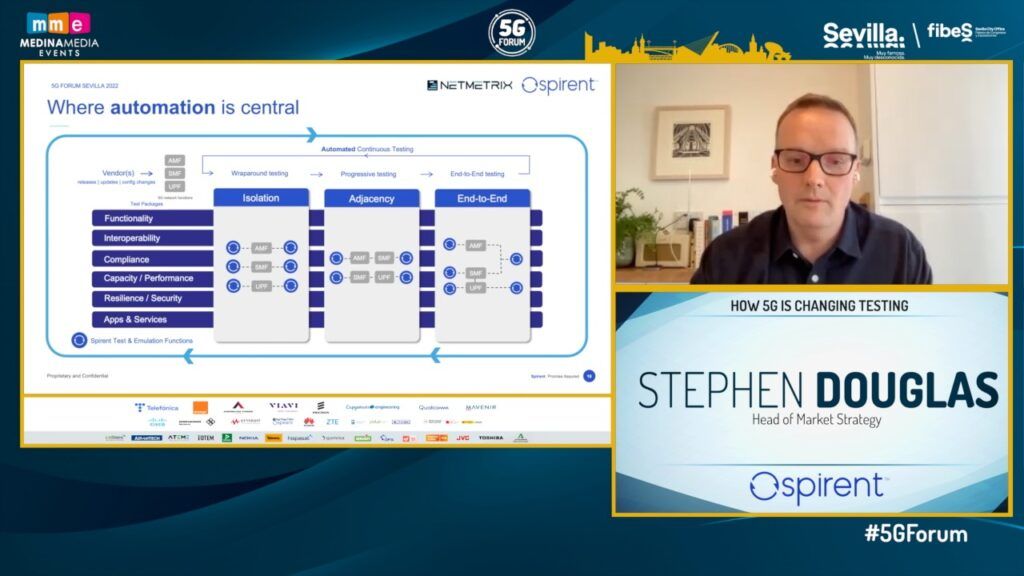
And it can already be assured that the deployment of this fifth generation of wireless connectivity is changing the way of testing and guarantees forever: “We are closer than ever to identifying the trends that are most likely to help drive beyond the finish line”.
Then it was Ericsson’s turn, led by Somaya El Marrakchi, who is Head of Networks Iberia for this company. In his speech he spoke of the urgency of 5G in areas of sustainability and growth. “ICTs have great potential to enable other industrial sectors to move towards a low-carbon economy that will be critical to meeting the SDGs. According to Ericsson research, ICT solutions can enable a reduction in global carbon emissions of up to 15% by 2030”.
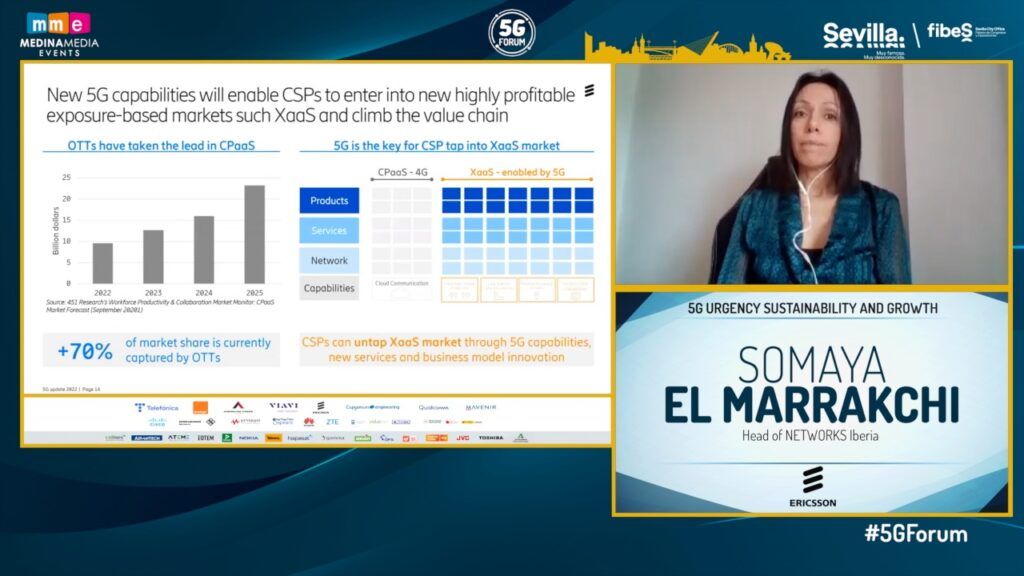
Marrakchi has said that his company works to support society with technology “that can create a positive impact, reduce our own carbon footprint and that of our products.”
In addition, he commented that 5G connectivity is essential for Europe to achieve climate goals: “5G will not only enable energy-efficient technologies, but it is the most energy-conscious standard to date
Great Asian giants at the 5G Forum
Later, it was the turn of Víctor Pascual, who is CTO in Spain and Portugal of ZTE. He has dealt with 2 very relevant points in his presentation. On the one hand, private networks and the easiest and simplest ZTE solution for the industry. And on the other hand, he talked about the consumption of 5G equipment and how they affect decarbonization in the industry, where ZTE leads the solutions with lower consumption and lower carbon footprint.
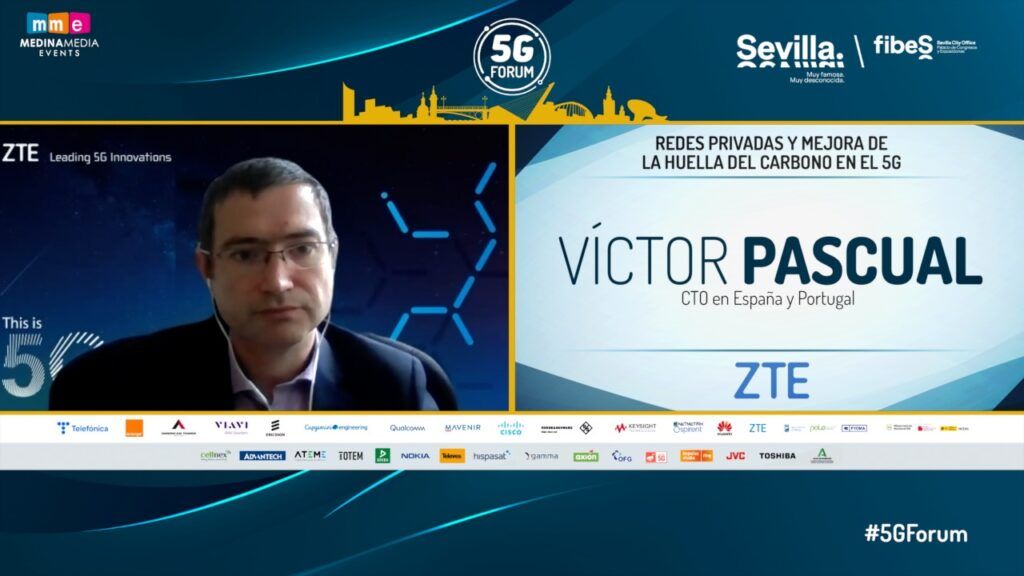
Pascual has assured that ZTE is committed to helping customers build efficient and modern networks that fit their goals and final requirements: “With powerful network capabilities, ZTE can also meet the needs of on-demand network deployment and usage of the clients”
Pascual has defined private networks as “a service that helps operators to make a comprehensive service order for the industry in a simple and efficient way throughout the process”
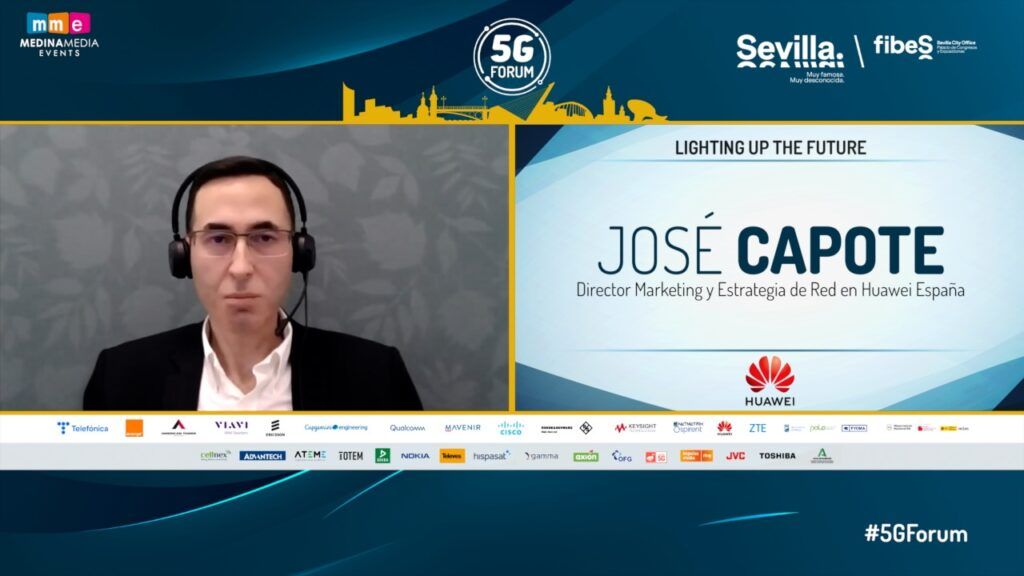
José Capote, Marketing and Network Strategy Director at Huawei Spain, presented Huawei’s vision of what the intelligent world will be like in 2030, both from the perspective of the digital transformation of economic sectors and the creation of business models and ecosystems in the industry plan. In his speech, he explained the main trends in information technology consumption habits and how, through innovation, Huawei continues to offer communications solutions in line with these trends in demand and technological change.
Capote affirms that the volume of data that each mobile user consumes has increased in recent years by more than 50%, so we could reach around 600GB of consumption per user by 2030”. “On the other hand, we are also seeing that the trend is that there are more and more connected devices, not only smartphones, but also connected or smart cars, which is going to cause greater data consumption.”
In reference to 5G for private clients, Capote has said that “once the coverage is already beginning to be deployed in an accelerated manner. What you have to try is to have a critical mass of users to be able to monetize this new 5G service”
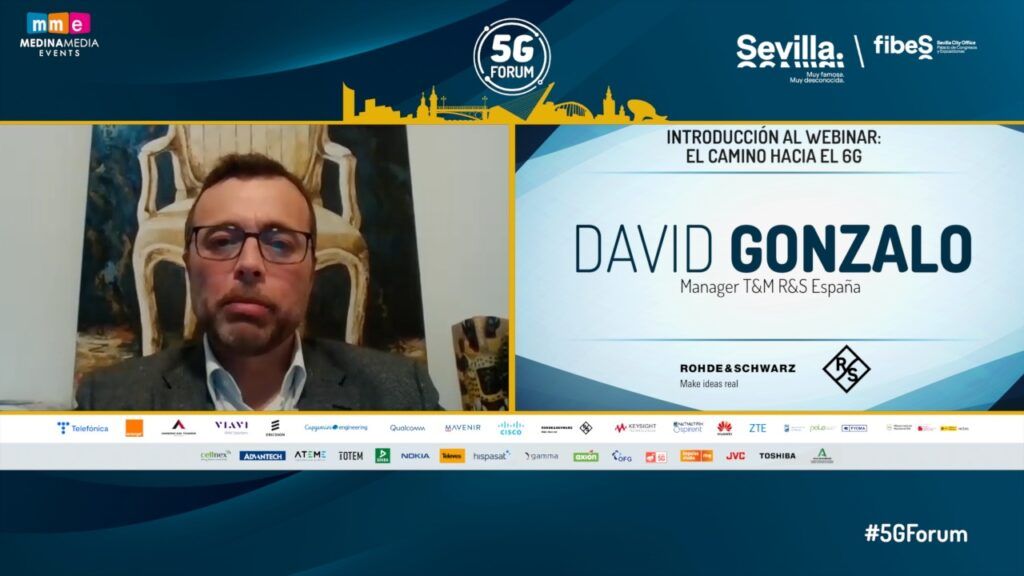
Finally, and to close this second day, it was the turn of Rohde & Schwarz. David Gonzalo, Business Director for Test and Measurement of this company, has conducted a webinar entitled “The road to 3l 6G: Millimeter wave measurement techniques” led by Germán Martín, Applications Engineer R&S Spain, in which they expose the technologies most relevant in the development of 6G in which the German company is immersed.
The 5G Forum will continue until May 13 virtually. Those registered for the 5G Forum 2022 will be able to follow the streaming sessions and network through videoconferences with speakers and participants, through the virtual platform created by Medina Media Events. The rest of the days of the week – May 11 to 13 – will continue in virtual format and will be broadcast every day on said platform. As soon as they are broadcast for the first time, they are made available to virtual attendees in Video on Demand (SVOD) on the Platform of Medina Media Events, the organizer of the event.
The 5G Forum is a privileged opportunity to publicize the successes of each initiative, each company, each university, each project and each city, in an event of international reference and with a first-class showcase. It is promoted by Sevilla City Office and Fibes. It also has the support of Telefónica, Orange, American Tower, Viavi Solutions, Ericsson, Capgemini Engineering, Qualcomm, Mavenir, Rohde & Schwarz, Keysight Technologies, Netmetrix-Spirent, Cisco, Huawei, ZTE, Malaga City Council, Digital Content Center , Fycma, National 5G Observatory, Cellnex, Advantech, Ateme, TOTEM, Dekra, Televes, Hispasat, Nokia, JVC, Toshiba, Axión, Impulsa Vision RTVE, OFG and Evolved 5G.